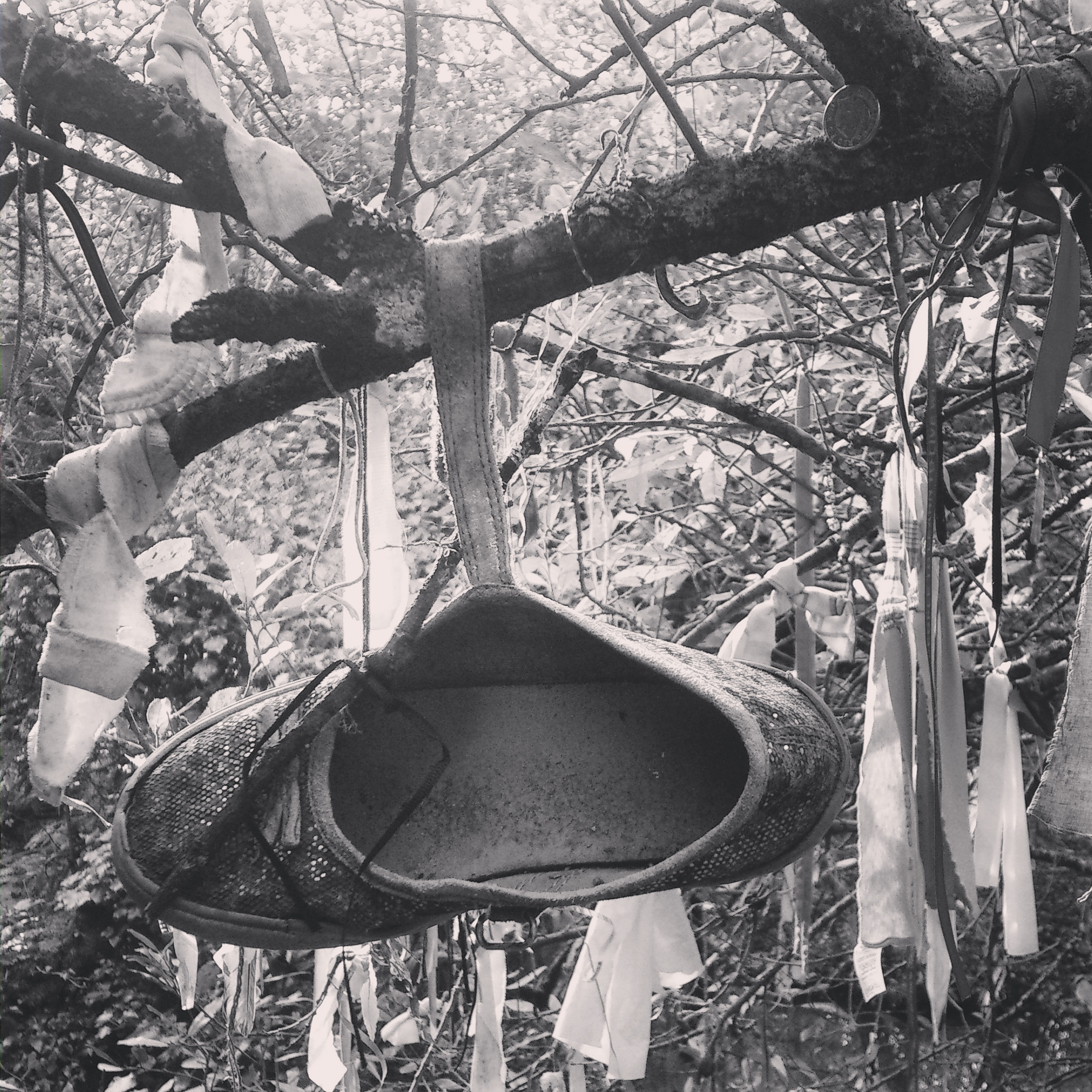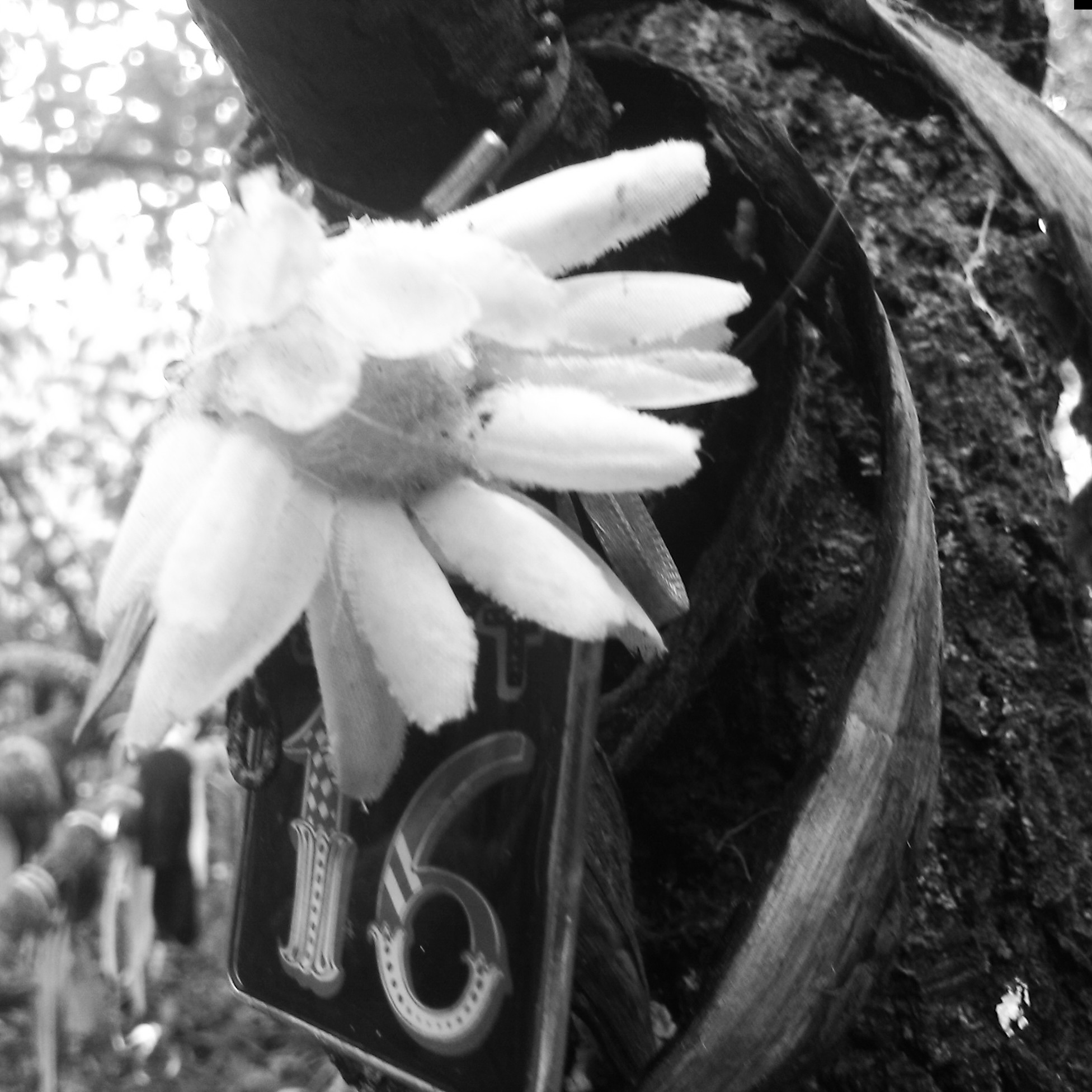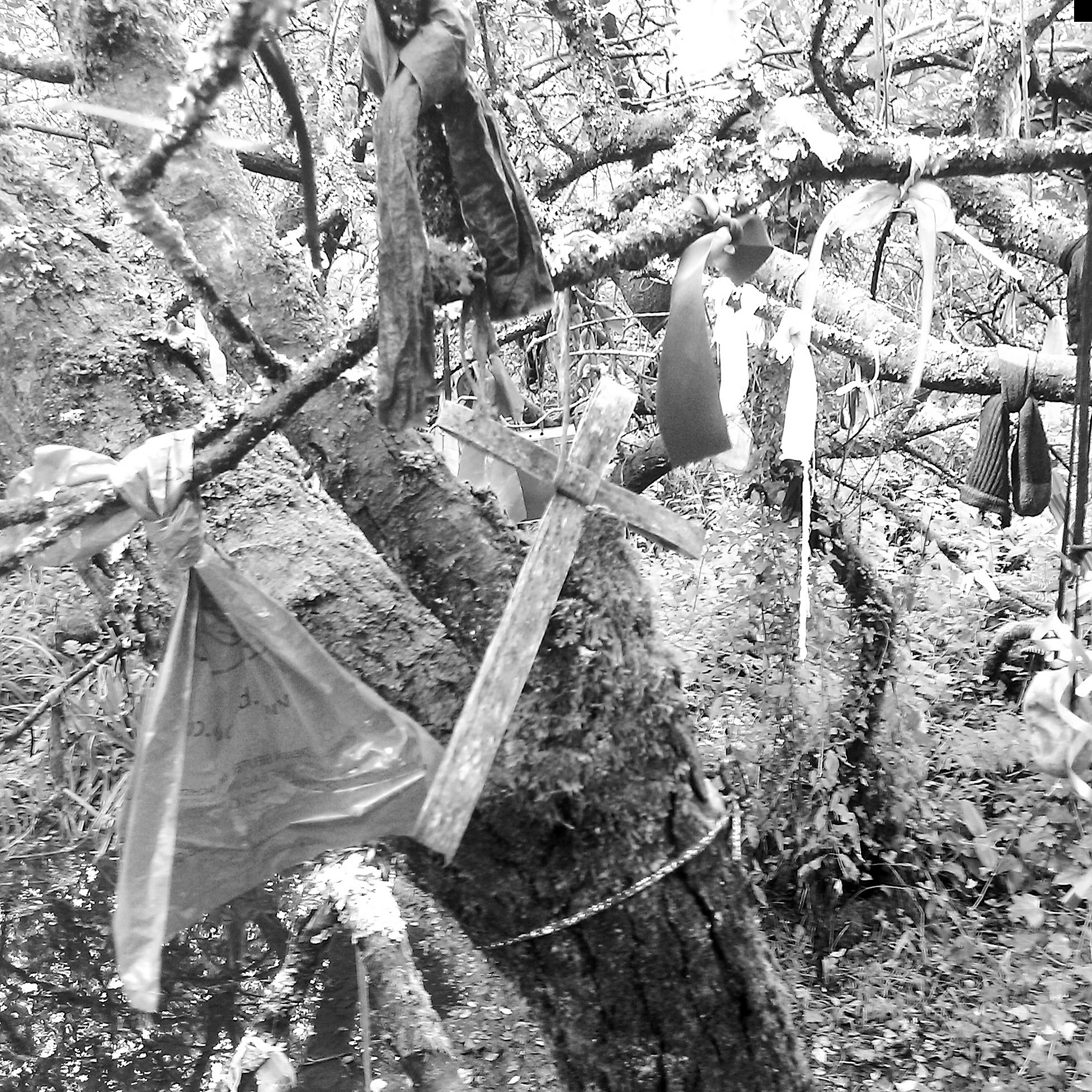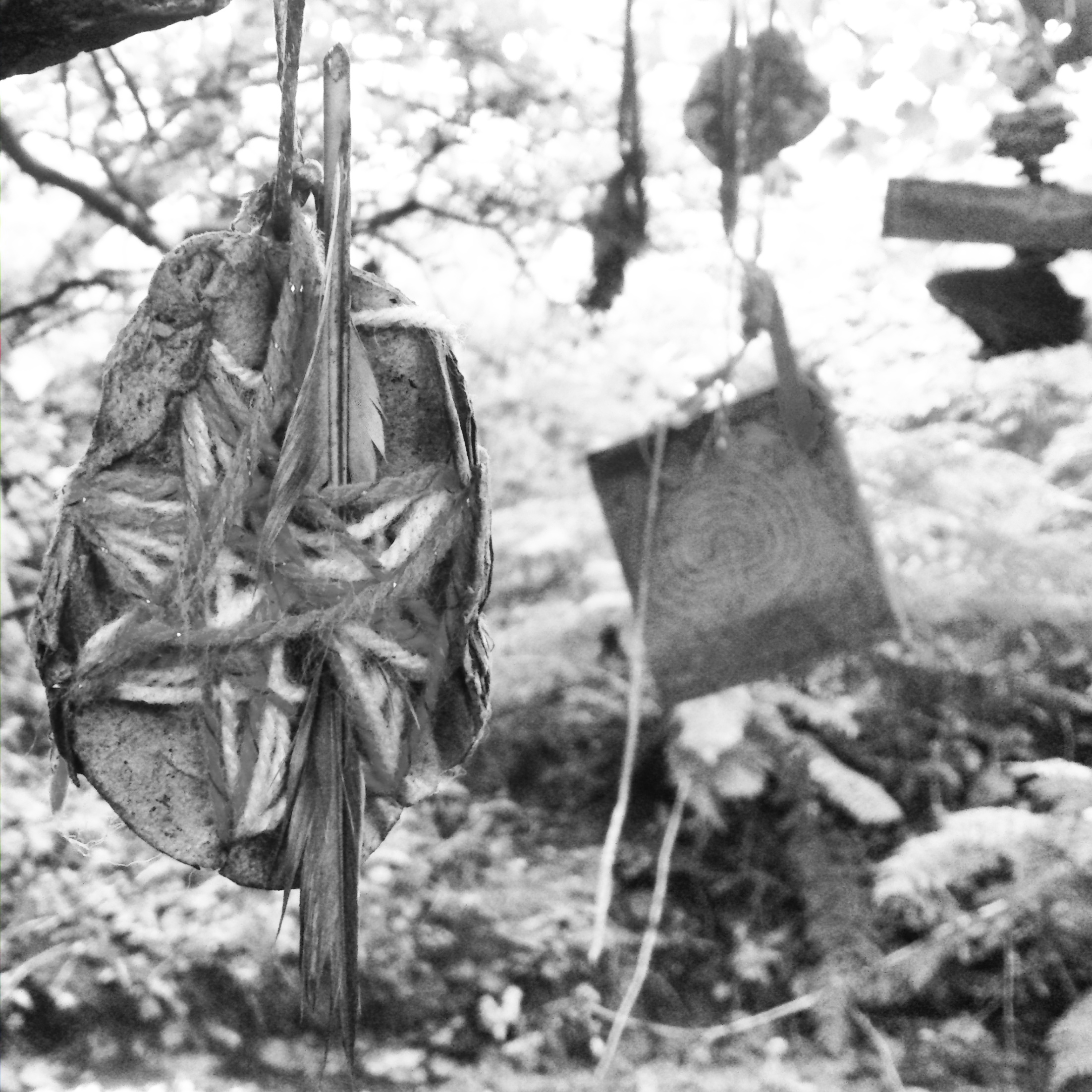Sacred & Absurd: Votive Offerings At The West Penwith Holy Wells - book of 30 photographs - text - published by Antler Press (2015)




































Foreword
[St Euny’s Well, September 19th 2015]
I stand in a small clearing of blackthorn and hazel at St Euny’s Well, surrounded by clouties - rags tied to the trees at these wells in a ritual of healing and many other objects besides: a clothed ceramic toad, a corduroy chicken, peg dolls, dream-catchers, a pair of sunglasses, a beaded necklace and scrolls of paper containing wishes inside mesh cloth bags.
Two border collies have just passed on their warmest greetings in the form of a midriff of muddy paw prints. A man’s voice calls them to heel. I’ve a large camera on a tripod: a certain vintage, all bellows, chrome and plates – men of a certain vintage always want to talk.
“Still get film for that camera?” … “Yes, I’m making a series on the West Penwith ritual landscape”, I say, wincing a little at what I hope doesn’t convey an air of art school pretension - “though I’ve actually started making more pictures on my telephone of all these things that people leave at the holy wells, mad isn’t it?”
I regret slightly the use of the word ‘mad’ though unless I’ve wildly misjudged countenance and clothes, this dog-walker is no new-age crusty.
“Probably more people visit this place nowadays than St Buryan Church”, he says, “still I suppose it means the same thing… it’s people’s hopes and dreams.”
Having expected a thorough dismissal of the practice – these offerings are a bone of contention even amongst those who attach contemporary spiritual significance to these sites and are a nightmare from a conservation perspective – I now feel slightly chastened for the implied cynicism in my tone.
We bid each other good day after this short encounter and I am left again to my own devices, reflecting on the wishes and prayers expressed through these votive offerings, at once sacred and absurd.
- William Arnold
Afterword
In pre-history the holy wells of West Penwith would have first provided a source of fresh water. Traditions of hydromancy: divination and healing attached themselves to the sites which became venerated for the ‘genius loci’ or resident spirit of the place. The traditions were assimilated by the early Christian Church – the wells being dedicated to various saints.
A lovely review of this series by Ian Humberstone, albeit with an error as to the the photographic process used - while I work extensively with old processes these photographs are digitally realised - appeared on Caught By The River on April 1st 2016 -
In pre-history the holy wells of West Penwith would have first provided a source of fresh water. Traditions of hydromancy: divination and healing attached themselves to the sites which became venerated for the ‘genius loci’ or resident spirit of the place. The traditions were assimilated by the early Christian Church – the wells being dedicated to various saints.
Images of book layout courtesy of www.antlerpress.co.uk